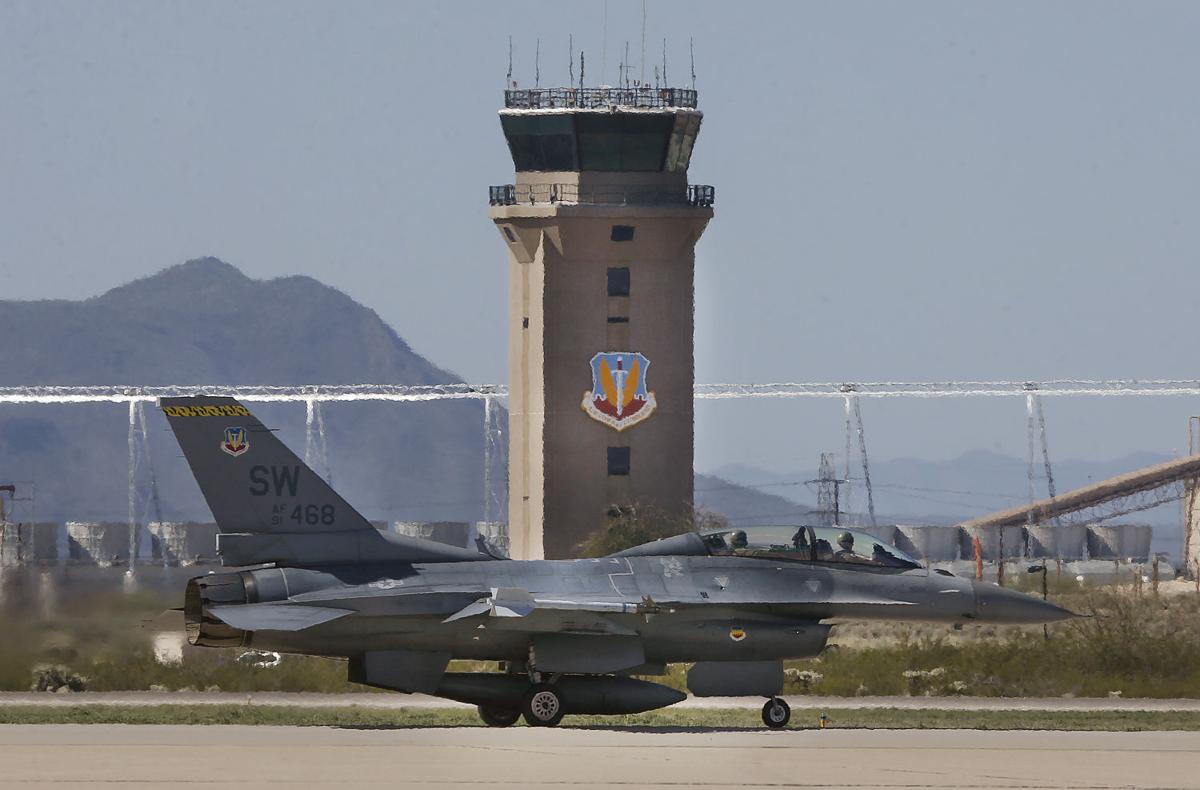The Air Force has approved a plan to allow a significant increase in training sorties by visiting units at Davis-Monthan Air Force Base.
On Friday, the Air Combat Command issued a final environmental report on a proposed expansion of visiting-plane training at Davis-Monthan, finding that raising the number of annual sorties up to 65 percent will pose no significant environmental issues.
That finding of “no significant impact” was unchanged from the final draft environmental assessment for Total Force Training — including the Operation Snowbird program run by the Air National Guard. Under federal law, a finding of significant impact could have prompted a longer, more involved examination called an environmental impact statement.
Under the preferred alternative adopted by the Air Force, the number of training sorties under Operation Snowbird, special training for foreign-ally pilots and U.S. cross-service training combined could rise to a maximum of 2,326 annually, though the actual number could be smaller. A sortie is counted when one aircraft takes off and lands as part of a mission.
That sortie cap is 65 percent more than the 1,408 annual training sorties flown in a baseline year of 2009. However, from 2010 through 2013, an average of just 842 training sorties were flown each year, according to the environmental assessment.
At the annual cap, the visitor training program would represent about 6 percent of all flight operations at D-M, base officials say.
As a result of some of the noise-modeling changes in the final draft, including use of a more sensitive noise model, D-M’s noise contour — the zone in which residents may experience significant noise from aircraft operations — was expanded by about 100 feet on either side.
In areas just northwest of D-M, an additional 128 homes would be located in the zone where sound levels are estimated at between 65 to 69 decibels, the report says. According to the Air Force, areas exposed to day-night average sound levels above 65 dB are “generally not considered suitable for residential use.”
The final assessment is the result of a multiyear process that included three public meetings in 2011 and two public comment periods in 2012 and 2014.
Critics of the initial draft environmental assessment, including the activist group Tucson Forward, had said it was flawed because, among other things, it didn’t include all the planes that participate and relied on average, instead of peak, noise levels.
Opponents, including the Arizona Center for Law in the Public Interest, also questioned noise modeling used in the study and contended it didn’t adequately address things like cumulative noise effects on health and the safety of jet operations.
Based on public comments, the Air Force in the last draft assessment included several types of aircraft not mentioned in the original draft, including louder jets such as the F-22 Raptor and the AV-8B Harrier.
The assessment did not include the noise impacts of the next-generation F-35 Lightning II stealth fighter — which noise critics vehemently oppose basing at D-M — because the jet has not been formally declared operational, the Air Force said last year.
D-M officials have said that most of the visiting planes are F-16 Fighting Falcons — the front-line fighter of many U.S. allies and the plane flown by the Air Guard 162nd Fighter Wing at Tucson International Airport, which already conducts some training at D-M and manages Operation Snowbird.
“While this process has taken time, it reflects the Air Force’s commitment to a complete and thorough review of the alternatives, impacts, and our analysis and consideration of all public comments,” Col. James Meger, commander of the 355th Fighter Wing, said in a news release.
The Air Force said it received more than 1,370 comments during the public comment periods, and all were considered and made part of the official record.
As part of the redrafted assessment, the Air Force combined Operation Snowbird, which began with mainly winter training in the mid-1970s but has since expanded, with training for foreign-ally pilots and U.S. cross-service training, under the name Total Force Training.





